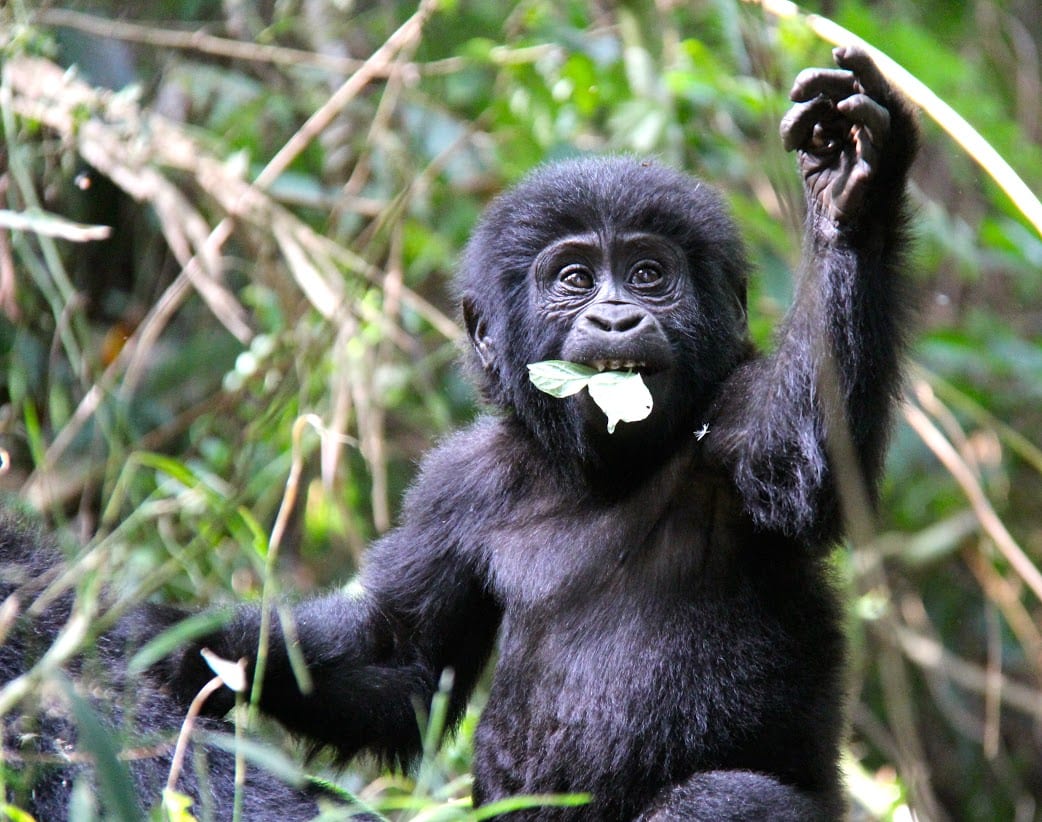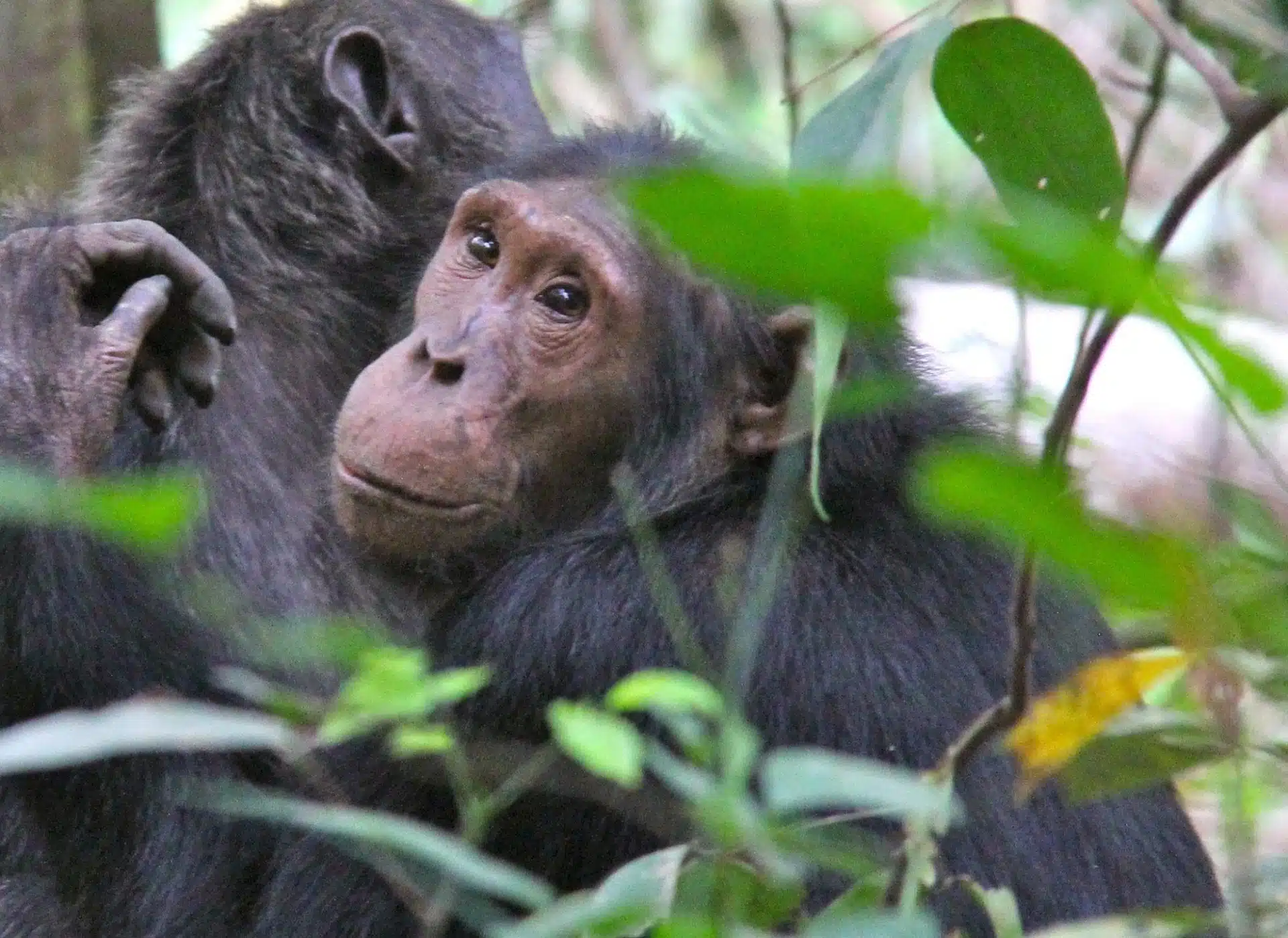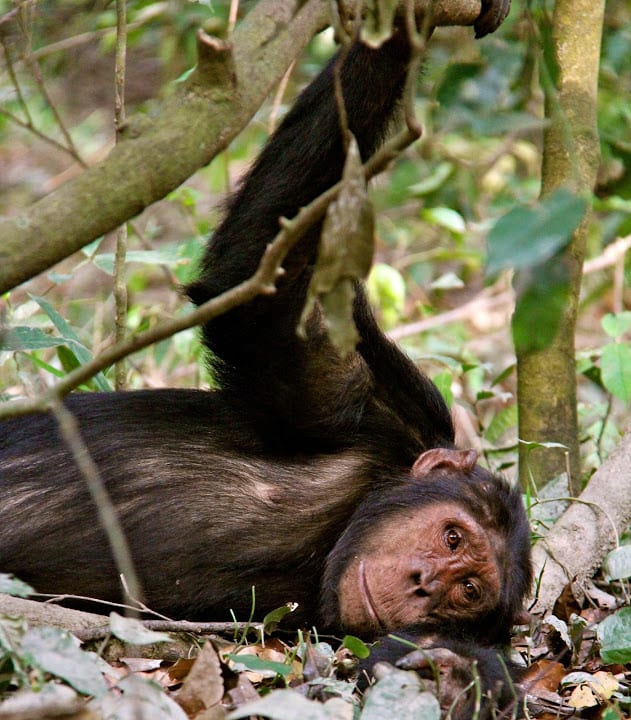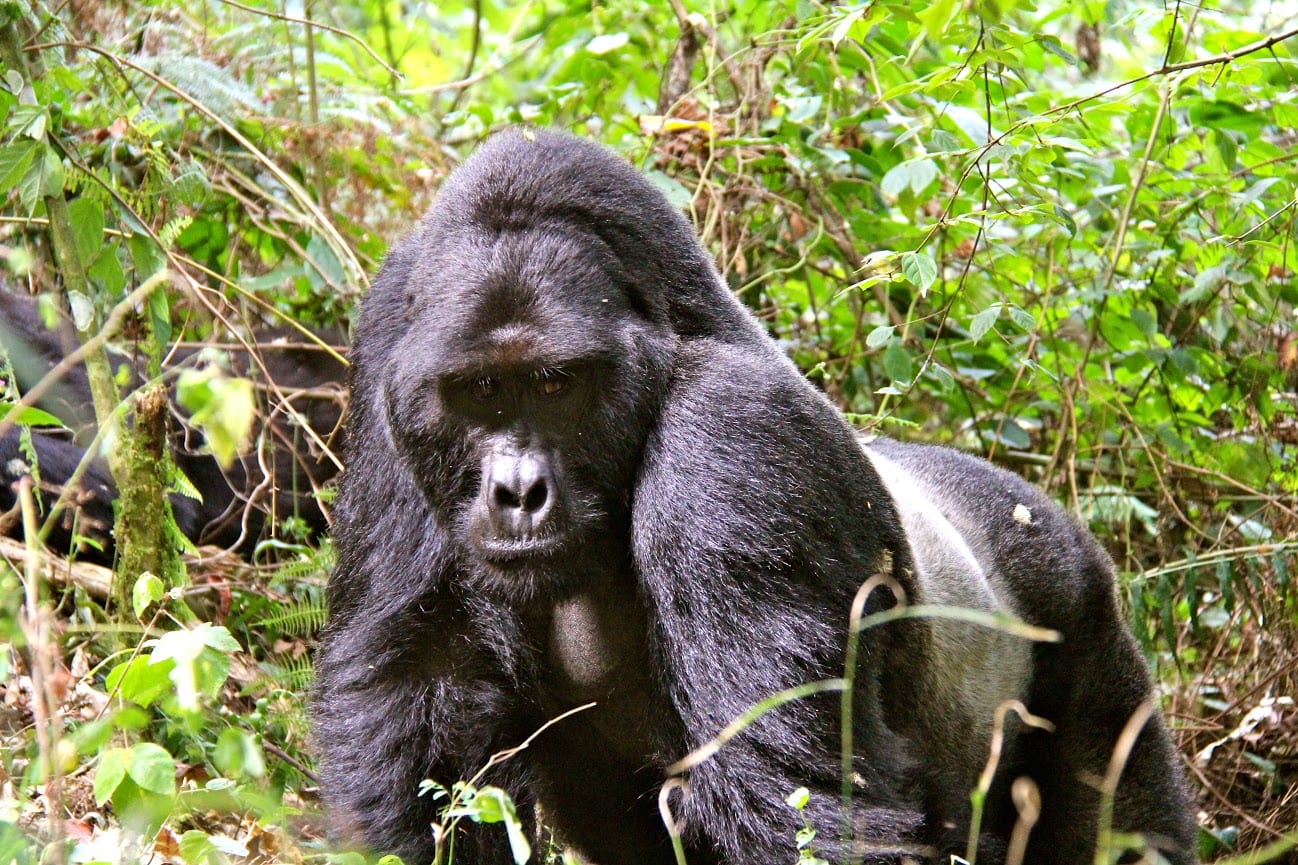Gorilla trekking is one of the most amazing and intimate safari experiences that you can get. Here, we interview a staff member about her experiences with gorilla and chimp trekking, what to expect when you go, and even how to capture great photos. Read on for more!
Tell me about your gorilla trekking experience.
I recently experienced gorilla trekking for the first time in Uganda. While the gorilla trekking was amazing (more on that below!) I also found the entire experience of actually reaching the gorillas totally fascinating and exciting. During the trek, you get to see coffee plantations and tea plantations and local villages along the way. This is an awesome opportunity to learn about the culture, about the community, about the wildlife, conservation, and just an overall appreciation for the destination.
What happens during a gorilla trek?
In both Uganda and Rwanda, the actual trek involved taking switchbacks up the mountain until you find your gorilla family.
Once the gorillas have been located, you are able to go off the path. The forest is super dense, so your guide will use a machete to slash and swing, tearing down the jungle to make a path. You do leave your bags and your walking sticks behind because it’s sort of a crawling on all fours experience! This is where hiking boots and gloves come in handy, remember you are in the jungle!
Once you find the gorilla family and you go off the switchbacks, I would say the trekking is generally short from there. Once you find them, you settle in and sit and observe, let the gorillas get comfortable with your presence.
The silverback never minded all of us. He just carried on his merry way. All the females carry on with their young, lounging and foraging. They never really moved until the very end… they just stayed, which is good. You don’t want to encourage the gorillas to move or make them uncomfortable. The beautiful part is that you don’t realize you’re surrounded by the rest of the family until you turn around, and there’s a gorilla just sitting there.

What is the most exciting part about gorilla trekking?
A lot of people have close-up interactions with the silverback gorilla. We had a little bit of that. But I had one of the juveniles- it couldn’t have been a year old, it was tiny- and I don’t know what it was, but he came within a foot and was planning to continue coming, but his mom gave a tiny little noise and he scurried back. That was probably the coolest part of the whole gorilla trekking experience.
The babies feel comfortable and then they become parents, and the cycle will continue. The experience was good. It wasn’t a six-hour trek- I wanted it to be, but it wasn’t too too challenging. I thought going down was the harder part, you have to take your steps carefully. It was great!
How did you prepare for your trip?
Our packing list was a big part of it- we (Rothschild Safaris) have a section about what to bring for gorilla trekking, and I found that guide really, really helpful. The three most important things are a light rain slicker or jacket, because it will always rain, even during the dry season. It’s the jungle, you should prepare for some moisture. The hiking boots- definitely with some ankle support because it is steep and the rocks are loose. You want to make sure you are supported the whole way up. And running gloves. Having that ability to use your hands without cuts. Also- socks that go over your pants to protect you from cockleburs. That would be my preparing.
Do you need to be in good shape?
Almost anyone can go gorilla trekking, although we do recommend our travelers have an average fitness level as trekking can be anywhere from 1-6 hours. Probably you shouldn’t go if you just sit on the couch, but you don’t have to be a marathoner to enjoy it.
Who do you recommend gorilla trekking for?
I think truly almost anyone can do it. Most adults are absolutely able to go. And I think you absolutely should do it. There are not very many gorillas left, and it’s one of those once in a lifetime opportunities. It really is… it really does bring a lot of people to tears. The gorillas are so peaceful and so comfortable, and to think anyone would harm them is just mind boggling. Everyone should try gorilla trekking, as long as you aren’t trying to go from no physical activity to a trek.

What are the accommodations like?
There are all sorts of accommodations, from safari lodges to ones that are structured more like the camps that you see on safari. My favorite property was probably Gorilla Forest Camp. It was more tented, and I generally like the tented accommodations. It was beautifully done and the gorillas will sometimes come down from the mountain and walk around the property- both in Uganda and Rwanda, but it’s nice to be tucked into the jungle there. So yes, the accommodations are great and very similar to safari and definitely up to the Rothschild Safaris standard.
Could you talk a little about the differences between Rwanda and Uganda?
The first difference is the proximity of where you trek to the cities where you arrive. Kigali is where you fly into Rwanda, and that is a 2-3 hour drive to Volcanoes National Park, where the gorillas are located. It’s very close and easy to do. I would recommend a gorilla trek here as an extension to a safari in Kenya or Tanzania.
Uganda also has options to gorilla trek as an extension, but with flights Uganda is generally a safari destination in and of itself. I wouldn’t recommend Uganda for the first time safari goer because Uganda doesn’t have the Great Migration or rhino. But gorilla trekking does become more of a circuit here, because it would take hours to get all the way to the park. Not possible in a day. That’s the first difference.
The second difference is the level of difficulty. Mainly this is talking about the steepness of the mountains. It is a bit steeper in Uganda.
Rwanda has more clearings. So both Uganda and Rwanda are a jungle with lots and lots of foliage, and you truly machete your way through it, but Rwanda has clearings, where you can see open sky and don’t have as much brush in your way. For photographic opportunities, we have heard that people prefer Rwanda a little to Uganda. I had no issues in Uganda- I just moved whatever was in my way for photographs out of the way.

What about chimp trekking?
You can do your chimp trekking in Kigali National Park, or next to Queen Elizabeth National Park. I loved it! I think you go on an itinerary for gorillas thinking nothing will top the gorillas, and nothing did. But- there were a lot of close seconds, such as the chimps, which I was surprised by. The chimps came down, and there were a lot of adolescents. Two ended up sticking with us for the full hour. And again they were maybe a foot away from us, rolling on their backs, playing with their feet, rolling a twig between their fingers. Talk about closeness.
It was interesting to watch the chimps process us, to watch them process the things around them and to be comfortable around us. People always think to be careful around chimpanzees because of stories they hear, and that’s just not the case. When they are in their natural environment, healthy and balanced, in their natural world, it’s a completely different experience, and they were completely fine with having us be there. The chimps would be on the ground walking around and the alpha would come in, and they would all start grooming him and showing him he’s the big guy on campus- that was very cool.
Then at the very end they started heading up the trees. Food frenzy is a real thing. They were so excited- they were shaking, they were screaming. Seeing the truly natural behavior of a chimpanzee was just fantastic.

What is a chimp habituation?
It’s everything from the moment you’re waking up in the morning to when they make their beds at night- you do a whole day with the chimps in the bush, and it’s fantastic. Everyone loves it. You learn a lot about chimps and watch researchers and get involved in the process of conservation, which is amazing.
Do you have tips for photographers?
I would say you don’t need a big lens to do it, because you typically are very close. So you should be fine with the lens that comes with your camera, or even a point and shoot. The hard part is guaranteeing what they will be doing, which we can never do with nature. Some people will go on the chimp trek and the chimps won’t come down, then you have less opportunity to capture their expressions and faces and hands, which I found so interesting and was lucky to have experienced. But if they are swinging from the trees- fast shutter speed! It’s a bit more challenging. The gorillas will stay put a lot, so you can get some good photos by moving the foliage out of the way. But you don’t need anything too fancy, because you should be fairly close. Even your typical digital point and shoot should be fine.

Anything else people should know about gorilla trekking?
Just knowing how important it is. It’s an expensive extension to do, but the reason for that is ensuring conservation. What the permits do is: 1. Security. 2. Having those guys who stay with the gorillas on the mountain. When you go with your tracker you find another tracker who is already with the gorillas- he is essentially staying with them. He’s almost a part of the gorilla family- imagine that noise when you are going to clear your throat- he does that when you come, and it lets the silverback know that you are ok. Some of the money goes to conserving the environment, and some to prevent poaching. The other thing to know is that there are a limited number of permits available per a gorilla family per day. Gorilla trekking really is an exclusive, once in a lifetime type experience. People are only allowed to see the gorillas for one hour per day so that you aren’t stopping their natural behavior. You want them to forage, you want them to groom. So only an hour a day are you allowed to mix up their day. All of the permit fees go into conservation so that we can actually have gorillas. And that’s the most important thing. But I think everyone should see them. It’s important to experience.
Once you go to Africa, a little bit gets inside of you and becomes part of you. You start getting interested in how you can give back and seeing the impact that even one person can make, and that’s what the gorillas have.
Interested in viewing gorillas or chimpanzees in the wild? Check out our safaris in Rwanda and Uganda and contact us for more information or to start customizing your experience!
